These days, communication with peers and coworkers is a top need, and many software companies are available to help businesses interact efficiently.
Although there are various options available, if you know which tools are the best fit for your business, you can ensure that you are getting the most out of your money and time. Effective communication, especially in distributed teams, is critical to keeping businesses running smoothly and connected in real-time.
As synchronous communication tools evolve, organizations are increasingly turning to platforms that not only enable instant messaging and video calling but also integrate project management capabilities for a more unified communication experience. The ability to maintain strong synchronous communications is critical to fostering engagement and aligning teams in real-time, especially as hybrid and fully remote working models become more common.
Let’s dig deep into how employees will communicate with each other online and what tools they may need for synchronous communication.
Must-have synchronous tools for interaction and collaboration
- Chanty – A real-time communication and collaboration tool with text, voice, and video messaging. Includes a Kanban-style task manager for managing tasks directly within conversations.
- Zoom – A video conferencing tool that enables real-time meetings, webinars, and screen sharing for effective team collaboration.
- Google Meet – Provides instant video calls and screen sharing, integrated with Google Workspace for seamless team communication.
- Microsoft Teams – Combines chat, video conferencing, file sharing, and collaboration features in one platform for synchronous teamwork.
- Zoho – Organizes conversations, workflows, and tasks in real time, helping teams and external partners stay aligned.
- Visme – An online whiteboarding and visual collaboration tool for brainstorming and presenting ideas in real time.
- Miro – A digital whiteboard for synchronous brainstorming, idea sharing, and project planning for distributed teams.
Synchronous Communication in remote working teams
Any functional team must have effective communication as its backbone. It is also essential for remote teams that do not meet frequently. Synchronous communication tools play a key role in overcoming the challenges of remote working by enabling real-time interactions. These tools ensure that team members can instantly connect, address issues, and share ideas on the fly, which is critical to maintaining alignment and making quick decisions.
The most popular means of remote communication include everything from basic tools like email, chat, intranets, video conferencing, and team collaboration software to all-encompassing remote working tools in unified digital workplace platforms. Among these, synchronous communication methods such as video meetings and real-time chat are essential when immediate feedback, urgent decisions, or brainstorming are required.
When we talk about the different communication styles and forms, there are several ways to align the teams to reach their strategies. There are pros and cons to both asynchronous and synchronous communication strategies for remote working teams.
Asynchronous communication (such as email) can be helpful because it allows team members to respond at their convenience. However, this type of communication can also lead to miscommunication and misunderstandings. In contrast, synchronous collaboration ensures that team members interact in real-time, which promotes clearer communication and quicker resolution of any confusion or issues.
Synchronous communication (such as webinar tools) can help reduce miscommunication by allowing team members to see and hear each other in real-time. With synchronous communication, participants can clarify doubts immediately and ensure that everyone is on the same page, avoiding the potential delays and confusion that often occur with asynchronous exchanges.
However, synchronous communication requires team members to be available at the same time, which can be a challenge for teams spread across multiple time zones.
What is synchronous communication? It’s any communication that takes place live, with both parties interacting in real-time. While this promotes efficiency and engagement, it also requires flexibility from team members to adjust their schedules, which may not always be possible.
Ultimately, the best communication strategy for a remote team depends on the needs of the members, the team dynamics, and the nature of the tasks at hand. Striking a balance between synchronous and asynchronous communication is key to ensuring that the team is using the right tools for the right situations, allowing for effective collaboration without overwhelming team members.
This blog will look at some of the best options for synchronous communication tools.
Difference between asynchronous and synchronous communication
Asynchronous communication is a type of communication that doesn’t take place in real time. This means there is a bit of a delay from when a message is sent to when it is received, read, and replied to. This provides flexibility, allowing team members in different time zones to collaborate without having to be online at the same time. Common tools include email, discussion boards, and recorded video messages.
On the other hand, synchronous communication takes place in real-time, with both parties engaged at the same time. Tools such as live chat, video calls, and virtual meetings provide instant feedback, making them ideal for decision-making and urgent issues. Synchronous communication encourages instant interaction, which is essential for collaboration in fast-paced environments.
Both types of communication have their advantages: asynchronous tools offer flexibility and thoughtful responses, while synchronous tools are best for quick discussions and team collaboration. The choice between the two depends on factors such as the urgency of the task, the needs of the team, and the desired level of engagement. Understanding these differences can help organizations choose the right tools for effective communication.
When should I use a synchronous tool?
There are a host of factors to consider when deciding whether to use a synchronous or asynchronous communication tool. The most crucial factor is the purpose of the communication. If the goal is to convey information that is time–sensitive or requires immediate feedback, then a synchronous communication tool is the better choice.
Conversely, suppose the purpose of the communication is to exchange information that is not time-sensitive or does not require immediate feedback. In that case, an asynchronous communication tool is the better choice.
Advantages of synchronous communication
Synchronous communication tools have some advantages over asynchronous tools. For one, they allow for real-time communication between parties, which can be essential for coordination.
Additionally, synchronous tools can provide a sense of presence and connection that can be lacking in asynchronous tools. This immediacy also helps to build stronger relationships between team members by allowing direct interaction and a more personal exchange of ideas.
Finally, synchronous tools can be less prone to miscommunication since all parties are typically on the same page (literally and figuratively) simultaneously. This real-time interaction can foster better understanding, reduce the risk of misinterpretation and improve team collaboration. It can also streamline decision-making processes, as conversations happen instantly and often lead to quicker solutions.
In addition, synchronous communication tools enable more dynamic and engaging interactions, such as real-time brainstorming and feedback, making them particularly useful for creative teams or complex problem-solving tasks. They also allow teams to resolve issues immediately rather than waiting for responses, which can improve overall productivity.
Disadvantages of synchronous communication
Using synchronous communication tools has several disadvantages, such as technical difficulties that cause the audio or video to be choppy or delayed, making it difficult to communicate effectively.
Synchronous communication can be time-consuming, especially during long meetings or conference calls. It can also lead to ‘meeting fatigue’, which can affect productivity and morale. In addition, the need for team members to be available at the same time can create scheduling challenges, especially for globally distributed teams in different time zones.
Synchronous communication can limit in-depth reflection, leading to rushed decisions or misunderstandings. It also requires reliable internet and devices, and any technical glitches can disrupt communication and hinder collaboration.
The shift in trends from synchronous communication to asynchronous communication
Asynchronous communication is the future because it allows people to communicate without being tied to a specific time or place.
This type of communication is especially beneficial for people who are always on the go or have a lot of commitments. Asynchronous communication also gives people more control over their time and how they spend it.
Asynchronous communication allows people to communicate without being in the same place at the same time. This is especially important in a global economy, where people often need to communicate across time zones.
Second, asynchronous communication is more efficient than synchronous communication because it allows people to have conversations without interruption. This means that people can have more productive conversations because they can think about what they want to say before they say it.
Finally, asynchronous communication is more flexible than synchronous communication because it allows people to use a variety of communication tools, such as email, video conferencing and instant messaging. This flexibility makes it easier for people to find a communication method that suits their needs.
elearningindustry.com
The next-generation tools for synchronous communication
Synchronous tools for interaction and collaboration are increasingly essential for teams that need to work together in real time. Most employees have embraced hybrid or fully remote work and show no intention of returning to traditional office routines anytime soon. As a result, teams face new challenges: scattered communication across different channels, delayed feedback, lost context in conversations, and difficulties coordinating tasks across locations and time zones.
To stay effective in this environment, teams require a more innovative approach to collaboration. Synchronous tools allow employees to respond instantly, share ideas as they emerge, and coordinate work without long feedback cycles. From instant messaging and video calls to collaborative whiteboards and task managers, these tools help teams stay aligned, track progress, and maintain engagement – even when working apart.
Below, we’ve compiled a list of the most effective solutions that address these challenges and enable seamless real-time collaboration.
| App | Why It’s a Synchronous Tool | Key Feature |
|---|---|---|
| Chanty | Instant messaging, voice, and video in real time | Tasks managed directly in chats |
| Zoom | Live video calls and meetings | Screen sharing and webinars |
| Google Meet | Real-time video calls and presentations | Works with Google Workspace |
| Microsoft Teams | Chat, calls, and meetings together | Live document collaboration |
| Zoho | Live team discussions and workflow updates | Unified workspace for teams |
| Visme | Online whiteboarding for brainstorming | Multiple users work at once |
| Miro | Digital whiteboard for instant idea sharing | Real-time collaboration and comments |
Live stream
Live-streaming tools are becoming increasingly popular as a means of real-time interaction, particularly for events and webinars. They allow companies and teams to instantly connect with large audiences. These tools offer the flexibility to stream content to viewers, engage with them via live chat, and even host interactive Q&A sessions. Live streaming has become essential for team collaboration, knowledge sharing, and building stronger connections in virtual environments. In addition to live streaming, many platforms now offer integrated chat functionality, allowing viewers to engage directly during broadcasts for more dynamic communication.
Chanty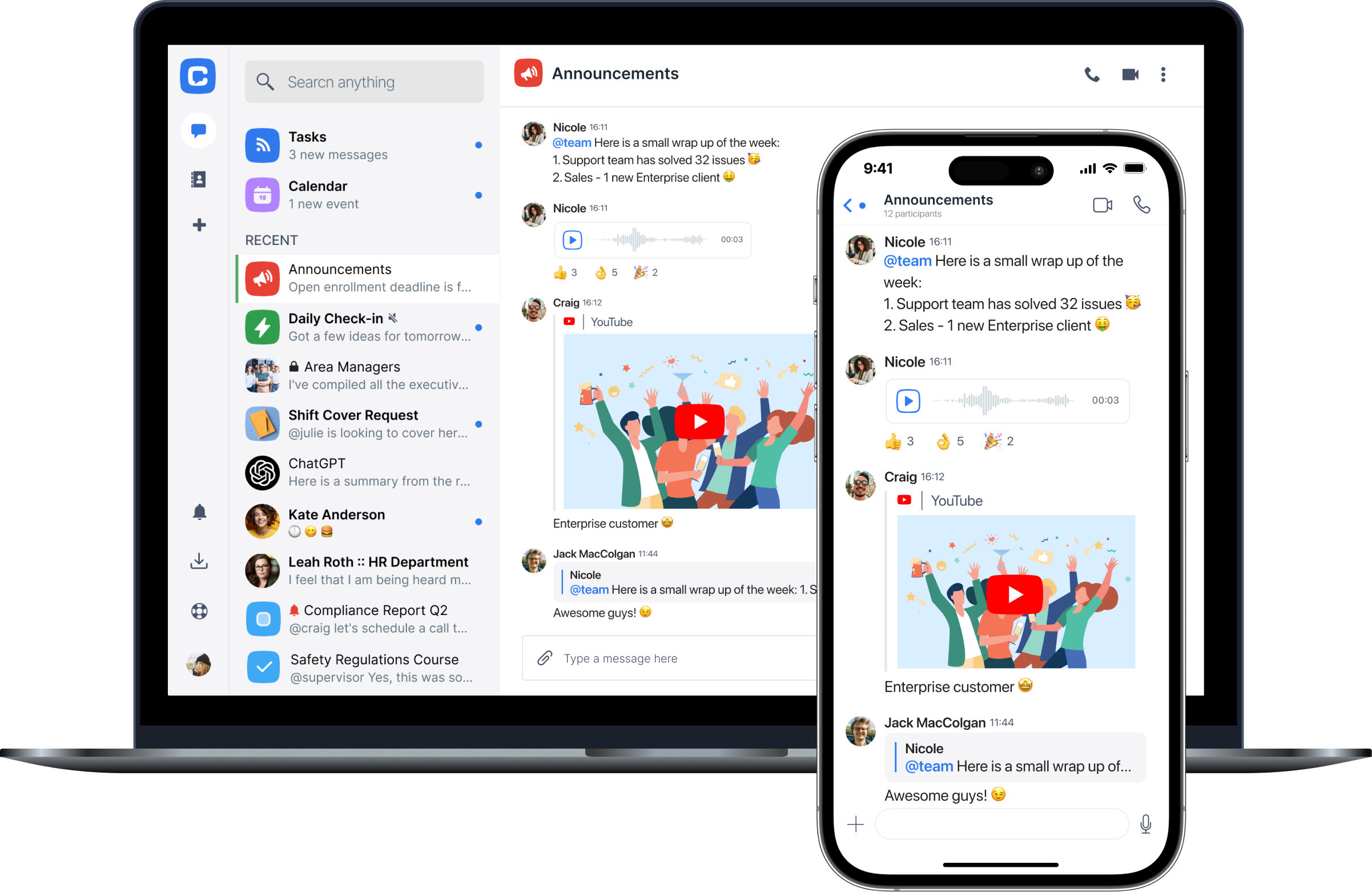 |
Chanty is a synchronous communication tool that allows users to communicate in real time and doesn’t limit the communication history. It is great for team collaboration, as it offers much more than only communication. Chanty allows users to communicate instantly via text, video and voice calls, making it an excellent option for teams that require effective communication without delays. It goes beyond basic messaging by enabling users to share files, manage tasks, and track progress – all within the same platform.
One of Chanty’s standout features is its Kanban-style task manager, which helps teams stay organized while collaborating. You can create tasks directly from messages, assign them to team members, and visually track their progress. This makes Chanty an all-in-one synchronous collaboration and task management tool that can significantly increase productivity.
Chanty’s integration with third-party apps makes it versatile, allowing teams to streamline their workflow. Flexible plans and affordable pricing make it a great choice for businesses of all sizes.
Pricing
- The free plan costs $0 forever.
- The Business plan costs $4 per user per month.
- The Enterprise plan with a custom price.
Pros
- Unlimited messaging
- Audio/video calling
- Built-in task manager with Kanban
- Seamless third-party integrations
Cons
- Joining a call by a link is not available at this time
Zoom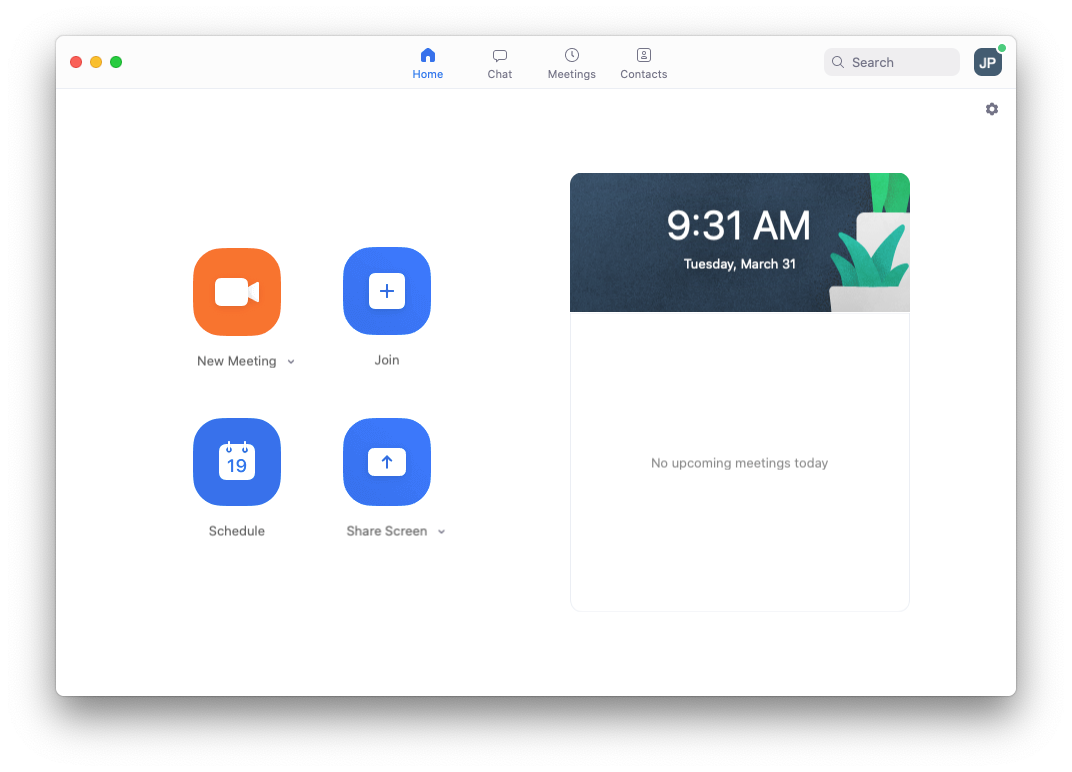 |
Zoom is a widely used synchronous communication tool that can be particularly useful for remote teams. It provides high-quality video conferencing and screen sharing, making it perfect for team meetings, webinars, and virtual collaboration. Zoom’s real-time communication capabilities help reduce delays and increase the efficiency of meetings.
However, Zoom comes with its own set of challenges, such as the need to schedule meetings in advance and potential security concerns. Despite these drawbacks, Zoom remains one of the most popular choices for synchronous communication, especially for larger teams and organizations.
Pros
- Supports large team members
- Can host meetings/webinar on Facebook
- Can access Zoom for free
Cons
- Too many subscriptions
- HD quality video is not upto the mark
Google Meet

Google Meet is a powerful synchronous communication tool that can be used for a variety of purposes. With Google Meet, you can easily connect with others in real time, whether you’re working on a project together or just catching up.
Google Meet also makes it easy to share your screen or present slides, so you can easily collaborate on a presentation or document. And because Meet is built into the Google ecosystem, you can easily connect with others who are using Gmail, Calendar or Drive. Whether you’re looking to connect with colleagues or friends, Google Meet is a great option for synchronous communication.
Pros
- Integrates flawlessly with other Google Workspace services.
- Excellent customer support
- Easy access
Cons
- Less features
- 100 participants maximum
- No capability to record sessions
Microsoft Teams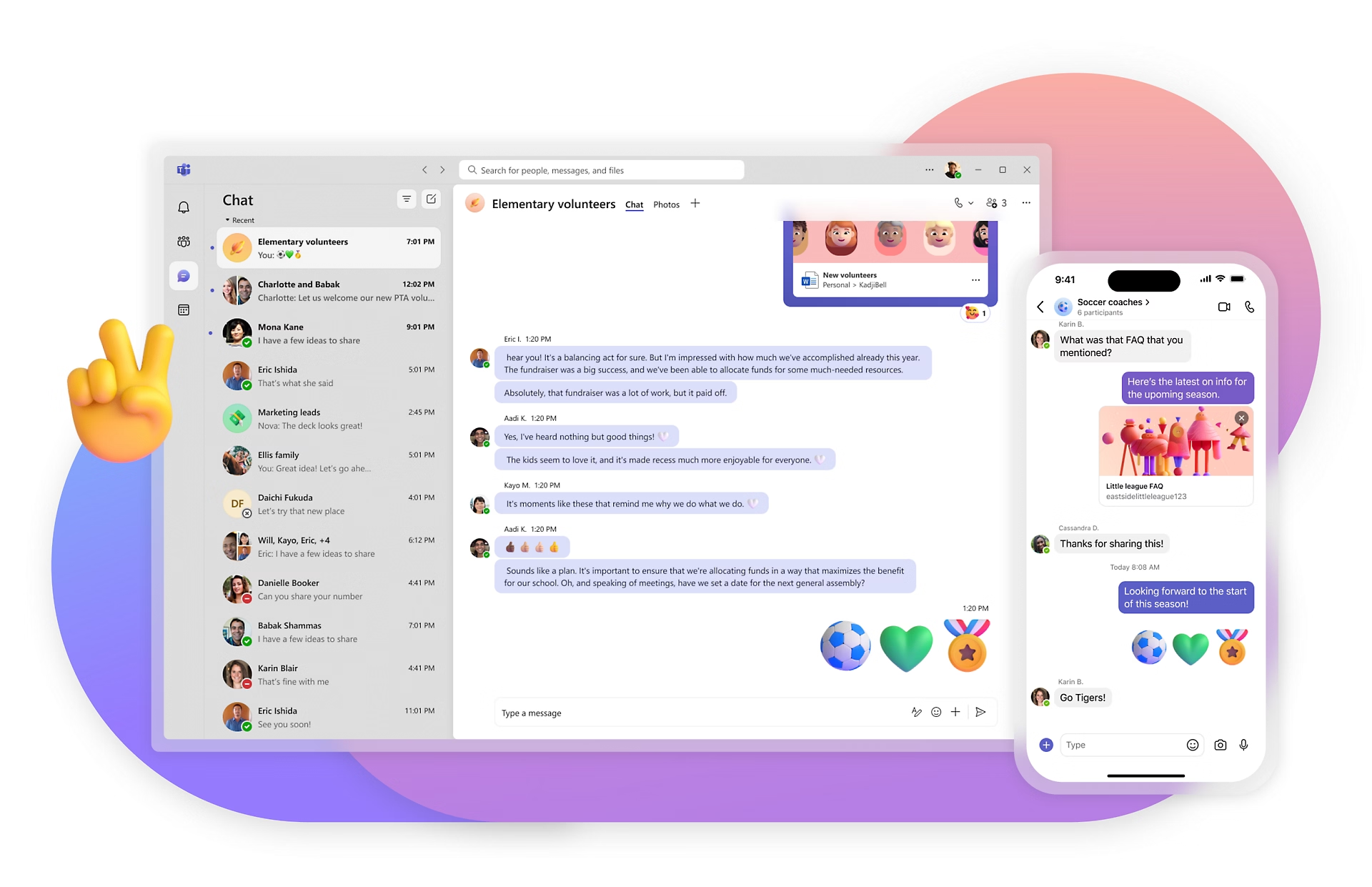 |
Microsoft Teams is a collaboration platform that enables users to communicate and work together in real time. Teams provide a variety of features that allow users to stay connected and productive, including chat, video conferencing, file sharing, and more.
Teams is an ideal platform for synchronous communication, as it allows users to instantly share ideas and collaborate on projects. The platform is also highly scalable so that it can be used by small teams or large organizations. With Microsoft Teams, businesses can improve communication and collaboration across the entire organization.
Pros
- Combining all tools into one location
- No extra charge
- Convenient chat adds
- Seamless file backup, collaboration, and search
Cons
- There are too many identical tools
- Use of unnecessary data
- Increased threat to security
Web conferencing
Web conferencing tools have become essential for synchronous virtual training and communication, especially in remote and hybrid working environments. These tools allow team members to connect in real time, regardless of location, providing an effective solution for meetings, training sessions, and collaborative discussions. Unlike other communication methods, web conferencing promotes more engaging interactions by integrating video, audio, and screen-sharing capabilities.
When it comes to synchronous collaboration, web conferencing tools excel at bringing teams together instantly, enabling face-to-face communication, and providing a range of productivity features. By integrating video conferencing, real-time chat and interactive features such as screen sharing, web conferencing tools enable the seamless collaboration that is essential for today’s teams.
Zoho
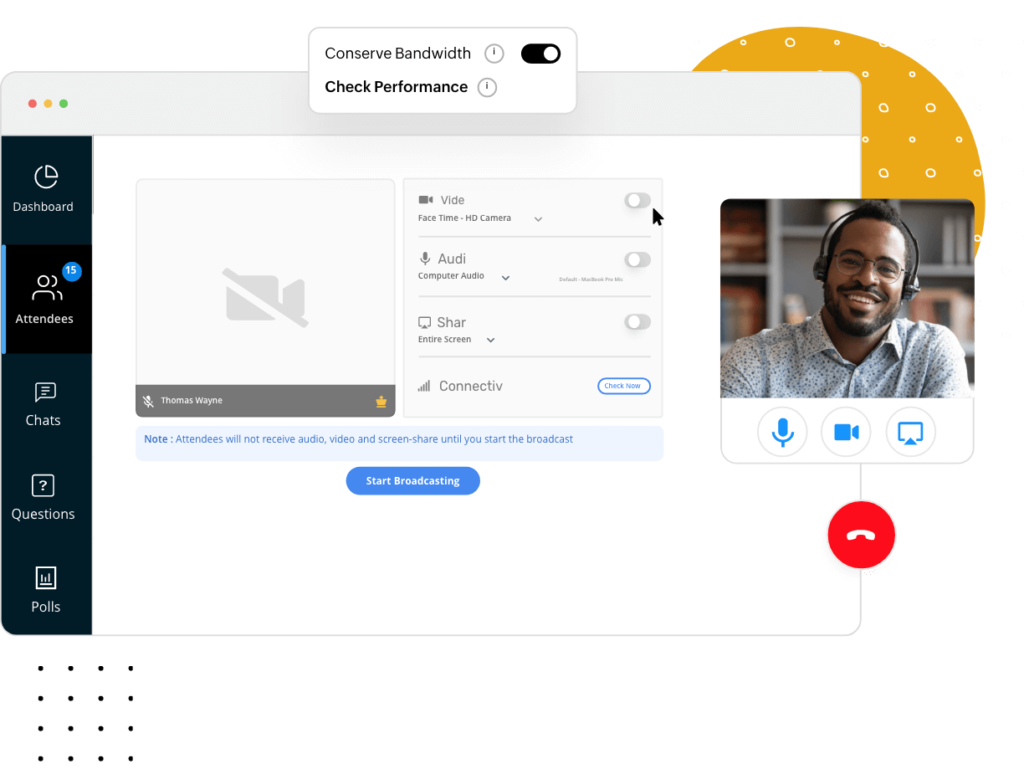
Zoho is a great tool for synchronous communication because it powers business productivity by organizing people, conversations & workflows in one single place. It helps B2B companies stay on top of their sales operations by helping them create a common platform to keep their partners, vendors, and other business stakeholders in sync.
Pros
- The ideal CRM for customizing.
- Superb workflow team.
- Easy to create custom workflow.
- Excellent customer support.
- Easy to access.
Cons
- Complicated Integration
- AI assistant needs to improve
Online whiteboarding
Online whiteboarding tools are essential for brainstorming, collaborative planning, and visualizing ideas in a digital environment. They allow team members to interact, share insights, and collaborate no matter where they are. These tools are perfect for remote teams or organizations with geographically dispersed employees who need to engage in creative problem-solving or strategy sessions. With the rise of synchronous collaboration, these tools ensure that all participants are aligned in real-time, making teamwork more effective and productive.
Visme
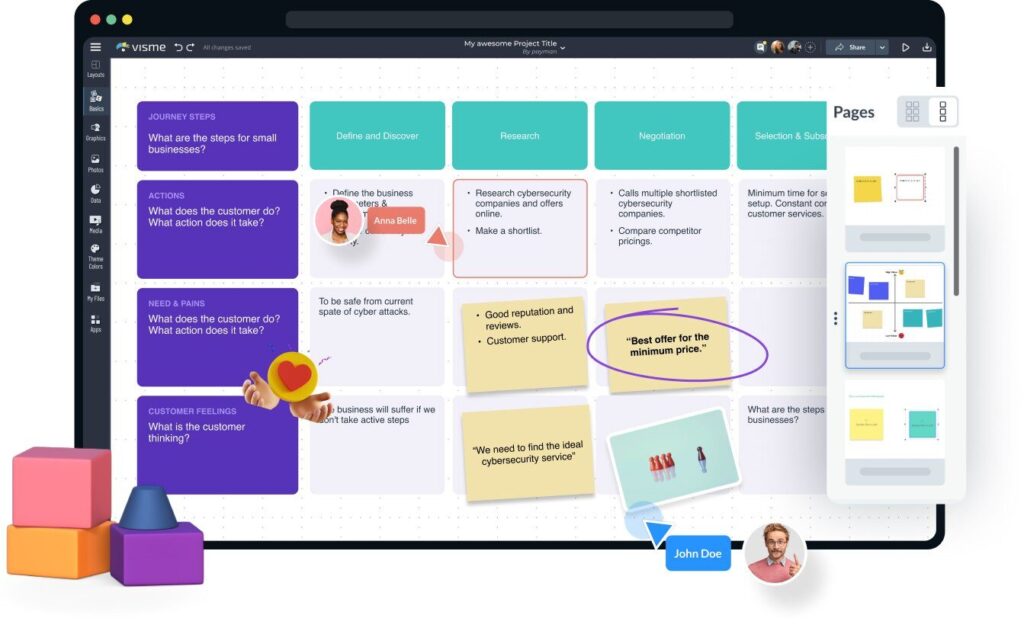
The online whiteboard from Visme is ideal for non-designers and beginners. You can quickly develop ideas, draw them out, and create designs.
All the whiteboard templates from Visme are fully customizable, so you can give your whiteboard a unique look by including imaginative design elements. Simply sign into your free or premium Visme account, open a new project, choose “Whiteboard,” and then begin creating to set up your Visme Whiteboard.
Pros
- Ideal for quickly producing social media infographics.
- Excellent for developing effective corporate presentations.
Cons
- Very Generic pre-build templates.
- Takes time tp understand its functionality.
Miro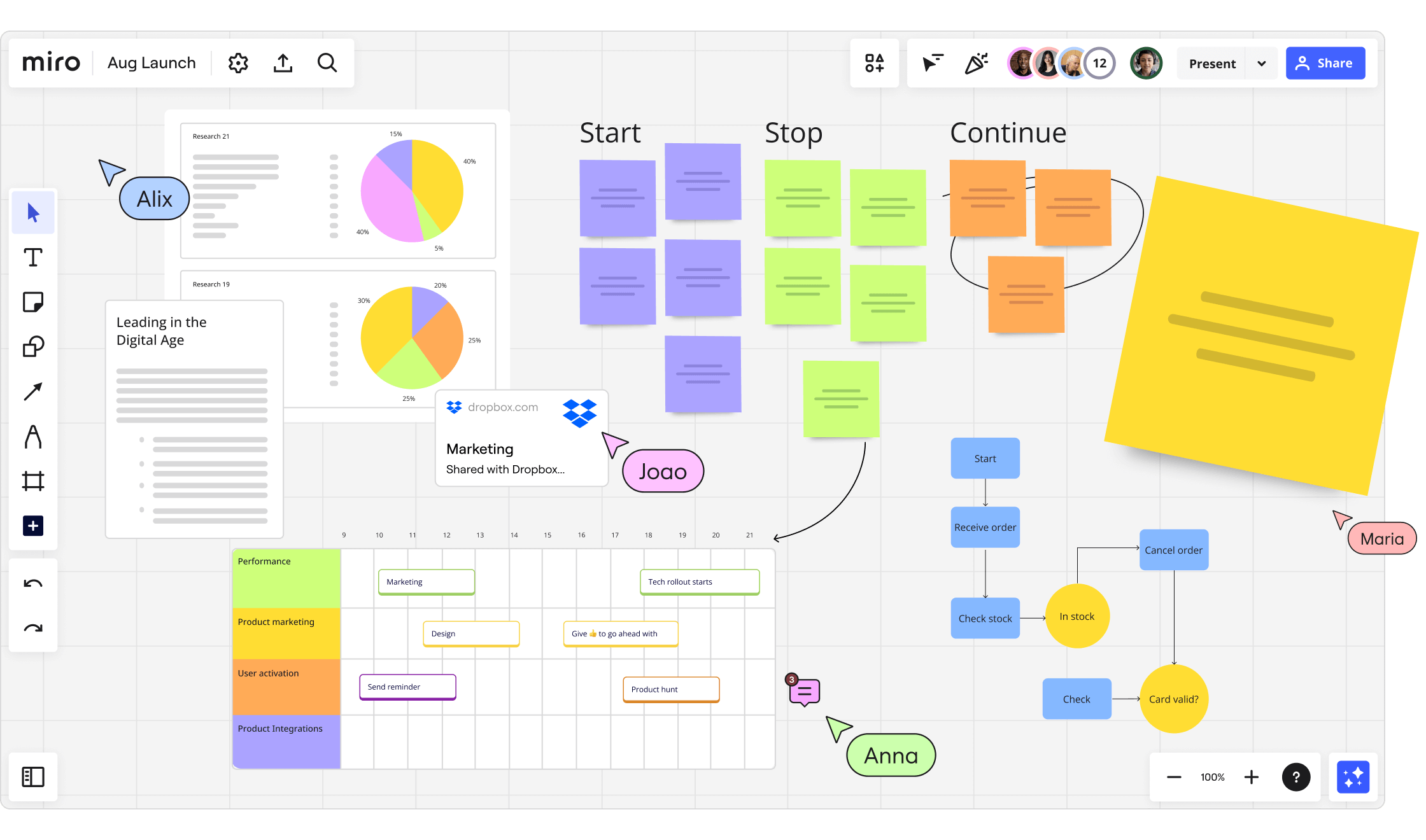 |
Miro is a synchronous communication tool that allows remote teams to collaborate in real-time. With Miro, team members can share ideas, provide feedback, and stay up–to–date on the latest project developments. Miro’s visual interface makes it easy to create and organize content, and its built-in features facilitate smooth and efficient collaboration. For these reasons, Miro is an ideal tool for remote teams that need to stay connected and work together productively for better team dynamics.
Pros
- Easy integration with other platforms.
- Real-time interaction.
- Simultaneous execution
Cons
- Even when the item is restricted to “only board owner can unlock,” the lock can still be opened by other users.
Conclusion
Nowadays, communication tools are not just tools but also experiences. The tools we use to communicate should be seamless, intuitive, and easy to use. With that in mind, we’ve listed the best tools that will boost your team’s synchronous communication. Think of having a communication plan for your team. When choosing the right tools, focus on those that support real-time team collaboration and reduce miscommunication.
In today’s digital workplace, synchronous collaboration is critical for fast decision-making and problem-solving. By choosing the right tools, you can ensure your team stays connected, productive, and engaged. A balanced approach to synchronous and asynchronous communication can increase efficiency and accommodate different workflows.
Ultimately, investing in the right synchronous communication tools can boost productivity and morale by encouraging immediate, clear, and effective communication.
We’d love to hear about your experiences with synchronous communication tools. Feel free to share your thoughts and recommendations in the comments below!









Add comment